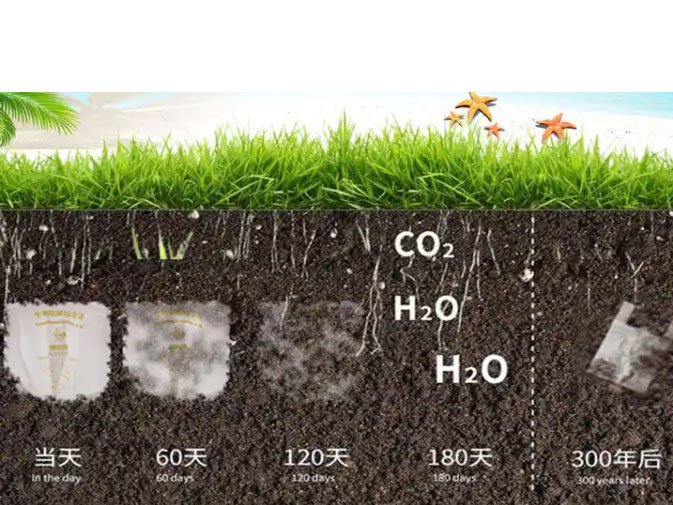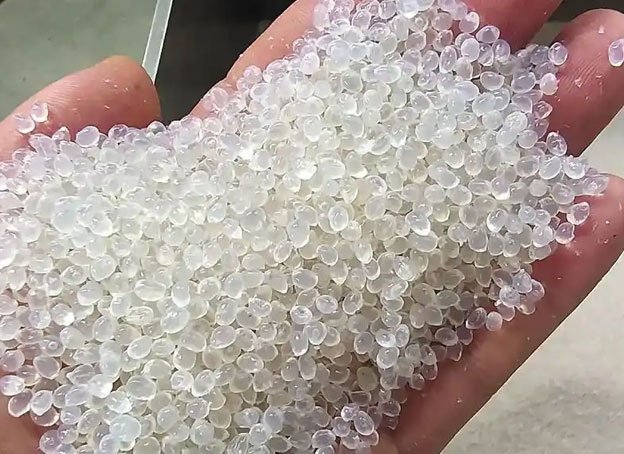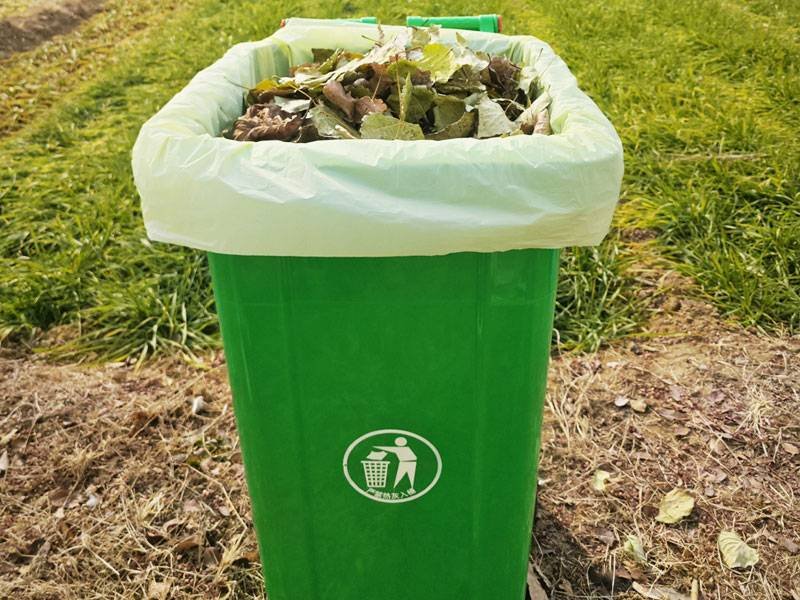In our daily lives, plastic pollution has become an increasingly serious environmental problem. Traditional plastic bags are difficult to degrade, which has brought a huge burden to the earth. With the improvement of environmental awareness, biodegradable bags have received widespread attention as an alternative. But “How long does it take for biodegradable bags to break down?” is a big question for people.
This article will explore in depth “How long does it take for biodegradable bags to break down, analyze the decomposition in different environments, and explain its environmental significance.


What Does Biodegradable Mean
Biodegradable bags are made of natural materials, such as PLA (polylactic acid), starch-based plastics or plant-based polymers. Unlike traditional plastics, they can be decomposed into water, carbon dioxide and organic matter by microorganisms under certain conditions.
It should be noted that “biodegradable” is different from compostable bags: the latter must meet strict composting standards (such as EN 13432), while the former may have residual microplastics.
What factors affect Influencing Decomposition Time?
Material composition
PLA requires high-temperature industrial composting, while starch-based plastics decompose faster in the natural environment.
The molecular structure of bio-plastics determines their degradation rate.
Environmental conditions
Temperature: The high temperature of industrial composting (50-60°C) accelerates microbial activity and shortens the degradation period.
Humidity and oxygen: A moist, aerobic environment promotes decomposition; lack of oxygen in landfills leads to methane release.
Microbial activity: The type of microorganisms in the soil affects the efficiency of soil degradation.
Bag thickness
Thicker bags require longer time to breakdown, for example, thick PLA bags may take more than 6 months.
Treatment methods
There is a significant difference in the efficiency of industrial composting and home composting.
Random disposal in the ocean may lead to incomplete marine degradation and the production of microplastics.
Chemical additives
Some bags contain additives that speed up decomposition but may also increase the risk of environmental toxicity.

Comparison of Biodegradable Bags Decomposition Time in Different Environments
| Environment | Decomposition Time | Key Conditions |
|---|---|---|
| Industrial Composting | 3-6 months (>90% decomposition) | High temperature (60°C), high humidity, microorganisms |
| Home Composting | 6-12 months (partial decomposition) | Unstable temperature, limited types of microorganisms |
| Marine Environment | Several years (may leave microplastics) | Low temperature, lack of oxygen, UV assistance |
| Landfill | Several decades (similar to traditional plastics) | Lack of oxygen, low temperature |
| Garden Soil | 1-2 years (incomplete decomposition) | Depends on local microorganisms and climate |
Biodegradable vs. Compostable Bags
Certification standards: Compostable bags need to be certified for industrial composting, while there is no uniform standard for biodegradable bags.
Residues: Compostable bags have no toxic residues after decomposition; some biodegradable bags may release microplastics.
Applicable scenarios: Compostable bags are only suitable for processing in professional facilities, while biodegradable bags are claimed to be suitable for a variety of environments (but the actual effect is questionable).
Environmental impact of biodegradable bags
The advantages of biodegradable bags are reduced plastic pollution and lower carbon emissions. By using “plant-based bags”, we can reduce our dependence on fossil fuels. However, we need to use and recycle these bags correctly to ensure that they truly play an environmental role. It is important to understand the “Environmental impact of biodegradable bags”.
Many people believe that biodegradable bags are completely harmless, but this is not the case. They may still produce microplastics, which are potentially harmful to the environment. There is no simple answer to the question “What is the degradation timeframe for eco-friendly bags?” because it depends on many factors. In addition, “How quickly do compostable bags decompose?” also depends on environmental conditions. “The breakdown period of plant-based bags” will also vary depending on the environment. The same is true for the “Decomposition duration of sustainable bags.”

Conclusion
The decomposition speed of biodegradable bags is highly dependent on environmental conditions and material design. Although they perform well under ideal conditions (such as industrial composting), careless disposal may be counterproductive. Consumers need to be rational about their environmental commitment and maximize sustainability benefits through proper disposal. The real solution? Reduce the use of disposable products and embrace the circular economy.
FAQ
Is Pla Biodegradable
PLA is biodegradable under industrial composting conditions, decomposing into carbon dioxide and water, but decomposition is slow in home composting or natural environments.
Are Bin Bags Biodegradable
Some garbage bags are marked “biodegradable”, but the decomposition speed and conditions vary, so it is necessary to distinguish whether they are “compostable”.
Are Biodegradable Bags Compostable
Not all biodegradable bags are compostable. Compostable bags must meet specific standards and decompose completely under composting conditions.
How Long Do Biodegradable Dog Poop Bags Take to Decompose
The decomposition time of biodegradable dog poop bags varies depending on the material and environment. Industrial composting may take several months, and the natural environment may take longer.
How Long Do Biodegradable Plastic Bags Take to Decompose
The decomposition time of biodegradable plastic bags is affected by environmental conditions such as temperature, humidity, and microbial activity. Under industrial composting conditions, it may take several months. Under ordinary natural conditions, it may take several years.





